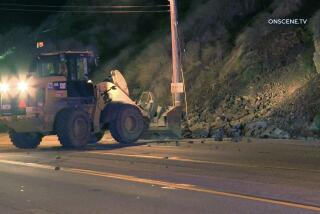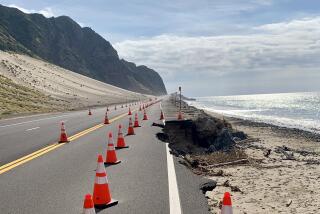The Woolsey fire nearly destroys Malibu’s wine country
The latest maps of the Woolsey Fire, the conflagration that has devastated Malibu and the Santa Monica Mountains, shows that the blaze covered nearly half of the Malibu Coast viticultural area (or, in winespeak, the AVA, which stands for American Viticultural Area, demarcates a recognized wine growing region). At 45,000 acres, this is a vast stretch of land, but overlaid on the map, it looks as if the fire zone has ripped its heart out.
Little more than 200 acres is planted in the area, but the damage to existing property was catastrophic, gutting the AVA after a half-dozen years of unprecedented growth as a local wine-country destination and crippling the region’s wine identity before it had a chance to mature.
Roads remain closed, reports remain sketchy and preliminary, but a number of established wineries have been destroyed or badly damaged, including Semler Malibu Estate and Jim Palmer’s Malibu Vineyard in Decker Canyon. Steve Bernal of Malibu Ridge Vineyards lost a home and a third of his vineyard to fire; his garage winemaking operation and cellar, which housed his older vintages, is gone.
LIVE UPDATES: The latest on the California fires »
The area’s central wine route, along the Kanan Dume Road corridor from Agoura Hills to the Pacific Coast Highway, was particularly hard hit — this conduit seemed to channel the blaze from Mulholland to the Pacific. “Given the proportion of damage to the number of growers that were affected,” says Elliott Dolin of Dolin Vineyards, “it’s really devastating to the appellation.”
Gregory Barnett, the president of the Malibu Coast Vintner’s and Grape Growers Alliance, reports extensive damage to existing vineyard land, wine equipment, structures and homes, and not least, wine inventories. “People have been asking if I have wine of theirs on hand that they gave to me as gifts,” he says, “because they’ve all lost their cellars.”
Many plan to replant what vineyards have been lost, but for some, like Palmer, who’s made wine at Malibu Vineyards in Decker Canyon for more than 20 years, this serves as a call to retire. The fire roared through the canyon with 100-foot walls of flame, propelled by 60-mph winds, destroying his home and outbuildings; even the steel gates across his driveway melted into a shapeless mass. A few vines may have been spared, but for Palmer, that will be the end of his winemaking career. “We’ve had a good run,” he says, “and we’re walking away with a lot of memories. But right now we’re a little stunned.”
Other winemakers were spared such extreme devastation. From his hilltop vantage point near the intersection of Mulholland Drive and Kanan Dume Road, Richard Hirsh of Cielo Vineyards looks out onto other ridgelines where his neighbors once lived. His property was one of the area’s premier wedding sites. Now it’s a promontory to scenes of devastation, with nearby homes leveled or lying in smoldering ruins. Hirsh is convinced that the ring of vineyards that surround the hilltop where he lives saved his structures. “Clearly the vines saved my house,” he says.
He’s not the only one who believes this.
“My house is surrounded by vines,” says Don Schmitz, of Malibu Solstice Vineyard, “which meant a reduction of the fuel load for the fire; it made all the difference in the world.”
Even at this early point, it’s clear that in a number of cases, vineyards played a role in saving structures and property, serving as a buffer to the deadly advance of the flames across drought-parched brush and scrub.
The firewall effect of vines is not universally understood or supported: In 2016, just weeks after the Malibu Coast appellation was recognized as an American Viticultural Area, the L.A. County Board of Supervisors banned the planting of new vineyard land there. (Existing vineyards were excepted from this ruling.) The fight was spearheaded by environmental groups and preservation-minded residents who wanted their hillsides populated with native flora; it has been fought in the courts ever since.
As Southern California adjusts to a year-round fire season, it remains to be seen whether this moratorium against grapevines may be doing more harm than good for the region. If vines prove to be an effective deterrent against the flames, if they prove they can save lives and property, and produce a bit of wine as a side benefit, then perhaps they may become a more welcome part of the landscape.
More to Read
Eat your way across L.A.
Get our weekly Tasting Notes newsletter for reviews, news and more.
You may occasionally receive promotional content from the Los Angeles Times.






